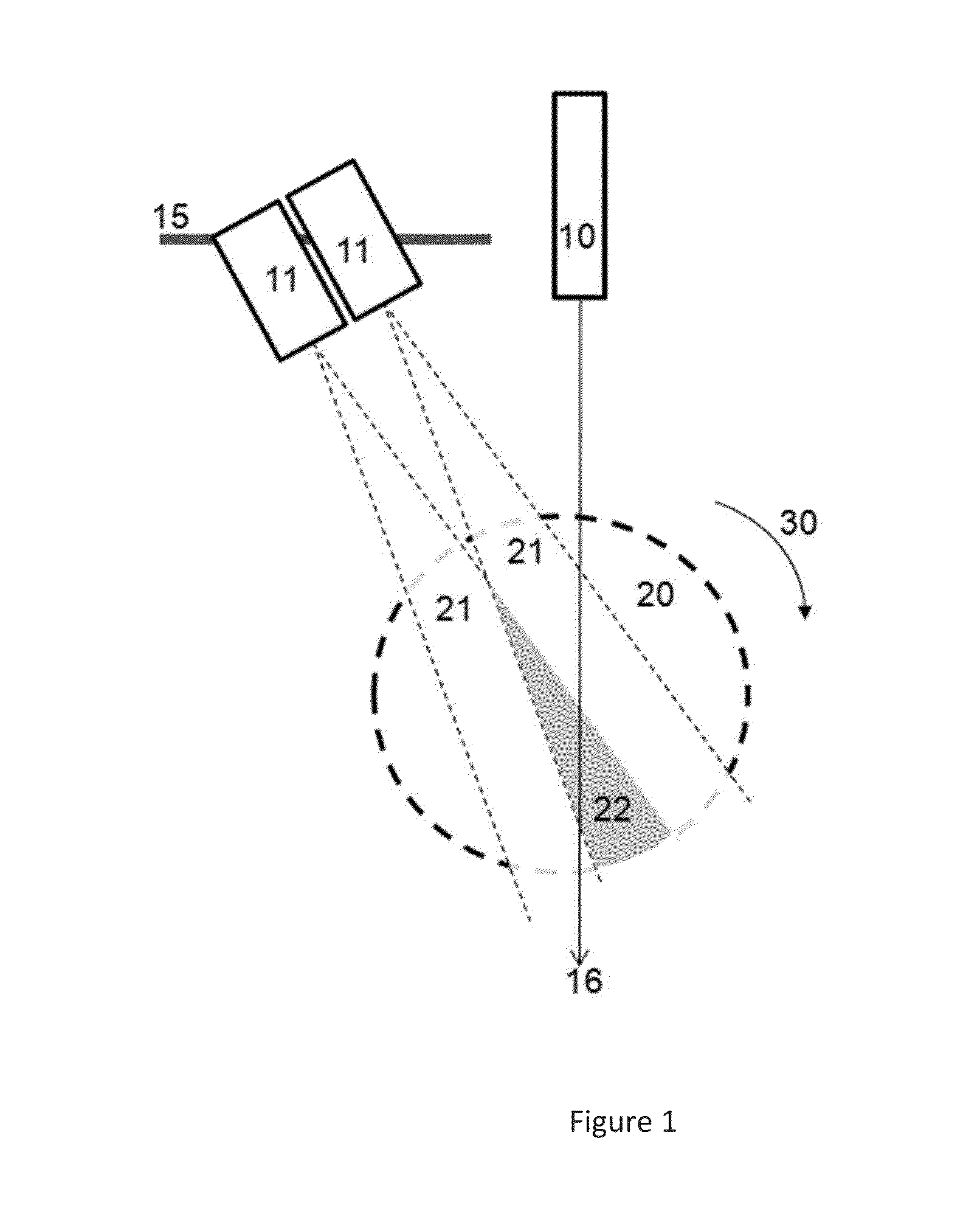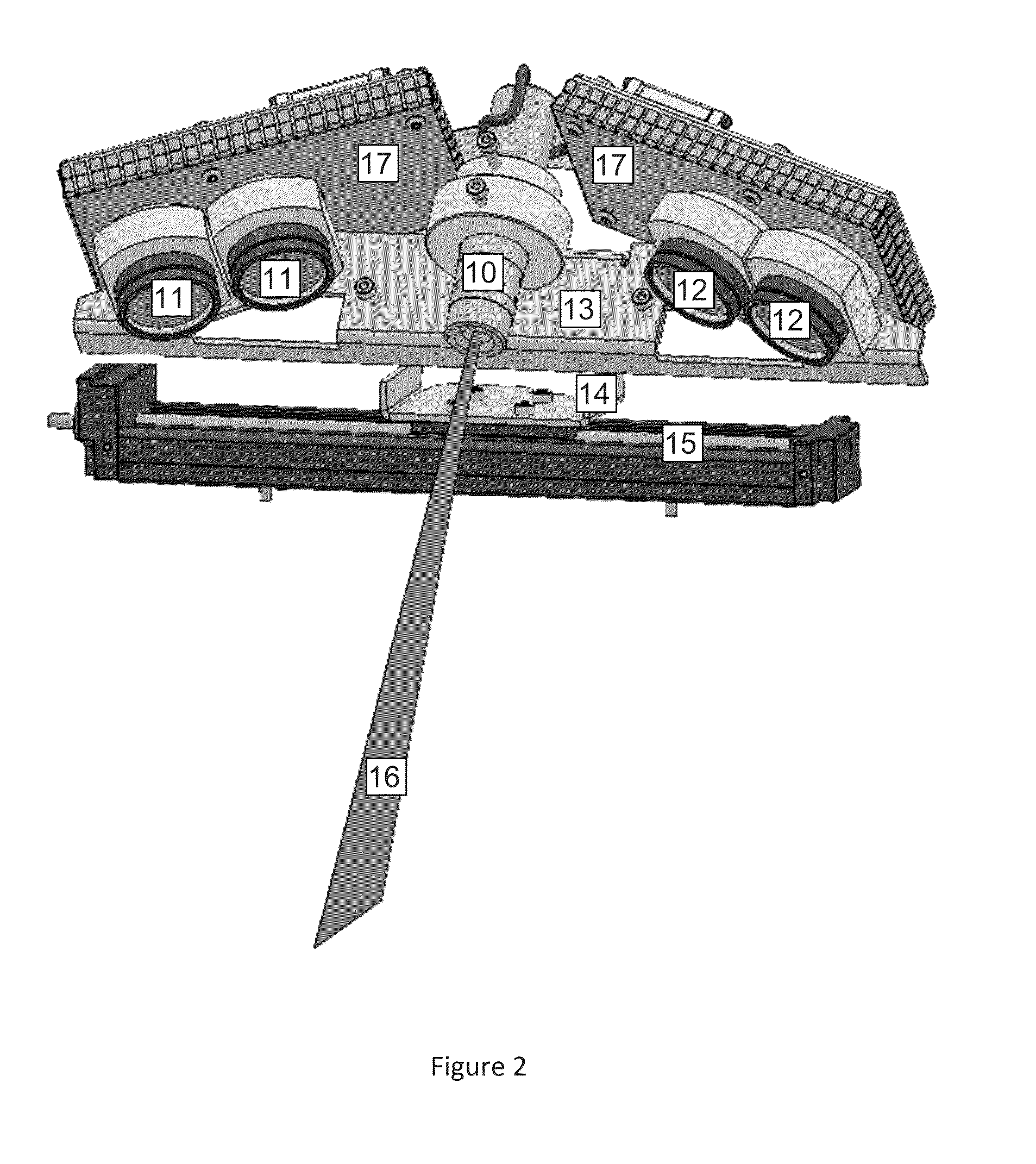3D scanner using merged partial images
a technology of partial images and 3d scanners, applied in the field of structuredlight 3d scanners, can solve the problems of difficult problem, single line of light can yield only one 3d contour, and identify individual parts
- Summary
- Abstract
- Description
- Claims
- Application Information
AI Technical Summary
Benefits of technology
Problems solved by technology
Method used
Image
Examples
Embodiment Construction
[0064]FIG. 1 shows a schematic of particular embodiment of the scanner according to the invention, as seen from above. A laser line generator 10 is the light source. It generates a fan of light—appearing as a single ray 16 from above—such that the light pattern is a line perpendicular to the plane of the figure. Two cameras 11 are mounted fixed to each other on one side of the light source. Together they can travel on a linear sweeping axis 15. The circular area 20 within the dashed line indicates the scan volume. The two cameras' fields of view are indicated by the intersection of area 20 and the two triangular areas 21, one for each camera 11. Finally, the overlapping field of view is indicated by the gray area 22. As indicated by the arrow 30, a target object contained in the scan volume can be rotated by a rotary axis (oriented perpendicularly to the plane of the figure and thus not shown). Note that in the sense of this invention, the field of view does not extend to infinity n...
PUM
 Login to View More
Login to View More Abstract
Description
Claims
Application Information
 Login to View More
Login to View More - R&D
- Intellectual Property
- Life Sciences
- Materials
- Tech Scout
- Unparalleled Data Quality
- Higher Quality Content
- 60% Fewer Hallucinations
Browse by: Latest US Patents, China's latest patents, Technical Efficacy Thesaurus, Application Domain, Technology Topic, Popular Technical Reports.
© 2025 PatSnap. All rights reserved.Legal|Privacy policy|Modern Slavery Act Transparency Statement|Sitemap|About US| Contact US: help@patsnap.com



